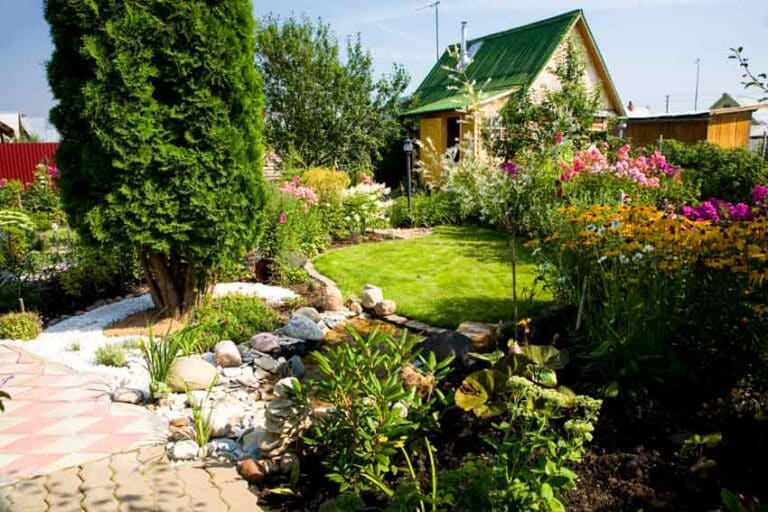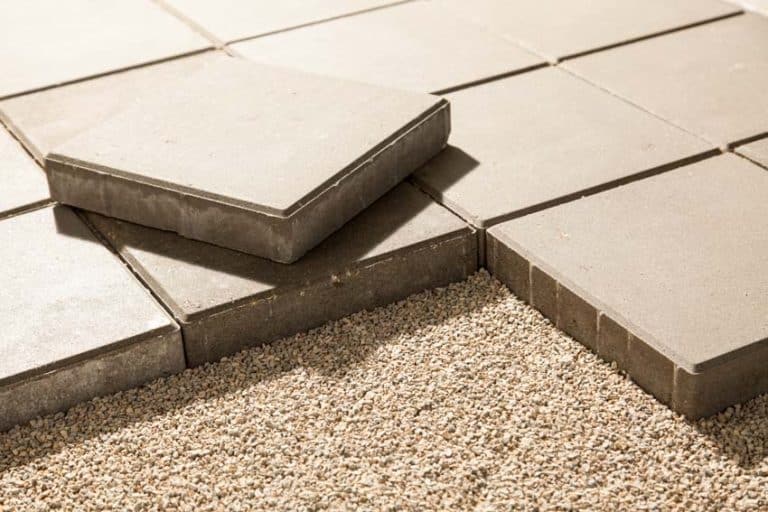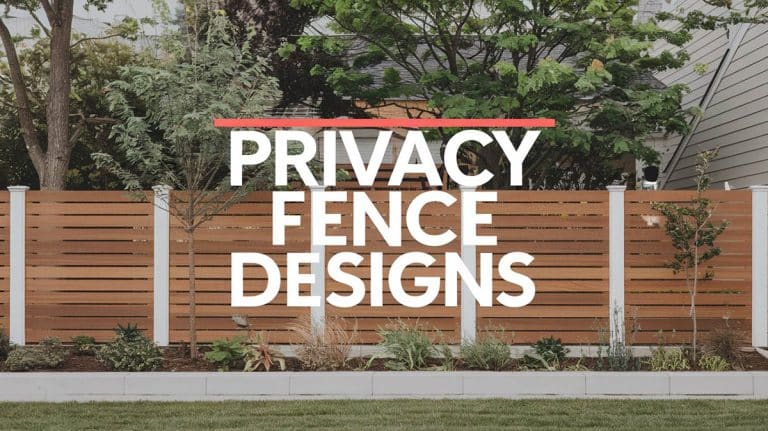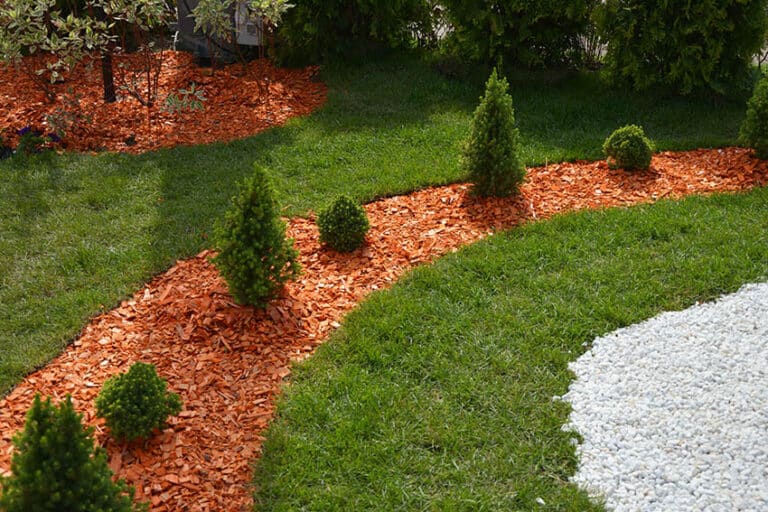Types Of Pergola Plants (Best Vines & Climbing Plants)
In this types of pergola plants guide you’ll see the best-looking options for climbing plants, clematis flowers, and how to grow vines on a pergola.
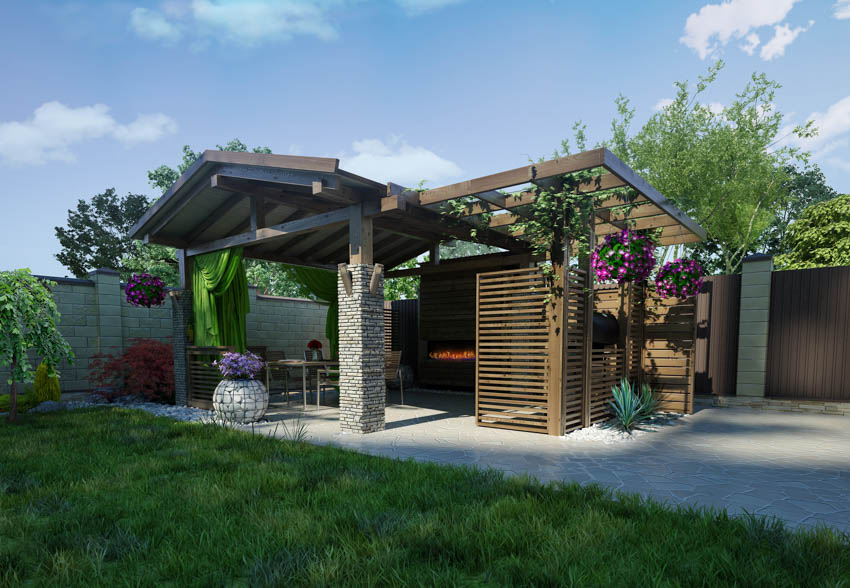
Not only do plants accent pergolas, but they also bring out the natural beauty of the many plant species that are more than happy to climb on them. Pergolas are a must in most classical-style gardens such as those that mirror styles from early British and English tea gardens.
In these instances, pergolas are placed as either entryways or dividers between areas of a garden and, depending upon the application, even used as barriers to separate a garden from another area.
These large wooden structures can often stick out in a floral-rich atmosphere, and so climbing plants are planted near the bases in order to encourage them to eventually overtake the structure, covering it in luscious foliage and blooms.
Another frequent application of pergolas is to provide shade for a specific area of a garden. This can prove to be incredibly useful in the construction of tea gardens, mezzanine centerpieces, and shade cover for plants with a lower light preference.
But what types of plants should you grow on a pergola? There are tons of options to choose from, and all of them are simply stunning.
What Plants Look Best On a Pergola?
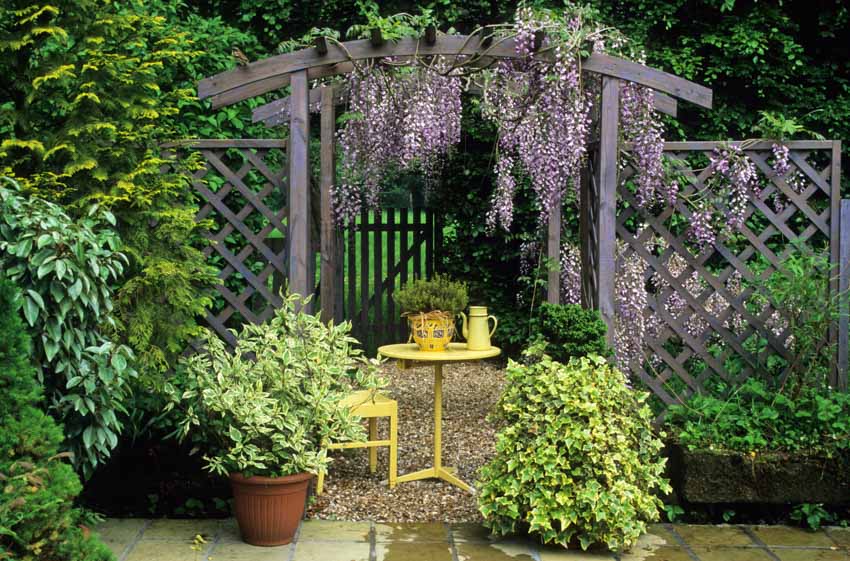
Will the plants be in containers, or on the ground? Will they receive direct sunlight or be shaded most of the day? These are things to consider when selecting which plants to use for your pergola.
In some cases, you may find that several different types of pergola plants are in order, either for the variety or to have something blooming during every season.
Either way, be sure to choose two plants that will not aggressively compete with one another and that enjoy the same general light intensity and soil type you provide. Keep in mind that even while smaller plants need smaller pots, they will eventually grow rather large and require repotting.
Try to offer the largest pot possible at first if you can, even if it may just take a couple of years for the plants to outgrow them.
Here are some ideal plants for pergolas:
Roses
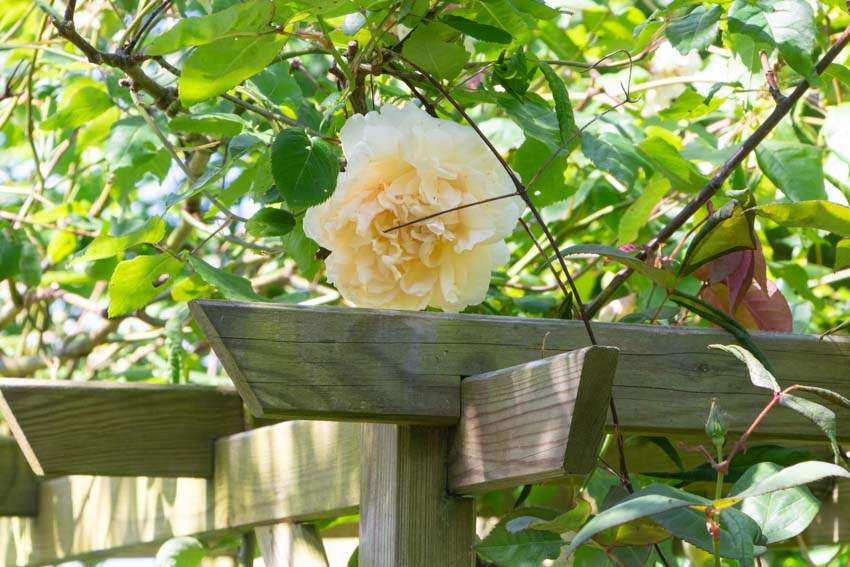
Roses offer a range of color options, attributes, and bloom varieties. Most climbing roses today have smaller blooms in greater numbers than their short, bushy countertypes, making them perfect for arranging a display of color and contrast during the long blooming season.
The flowers of rose plants omit sweet, reminiscent scents that are enjoyable to all and provide a nostalgic sense of comfort to gardens.
Honeysuckle
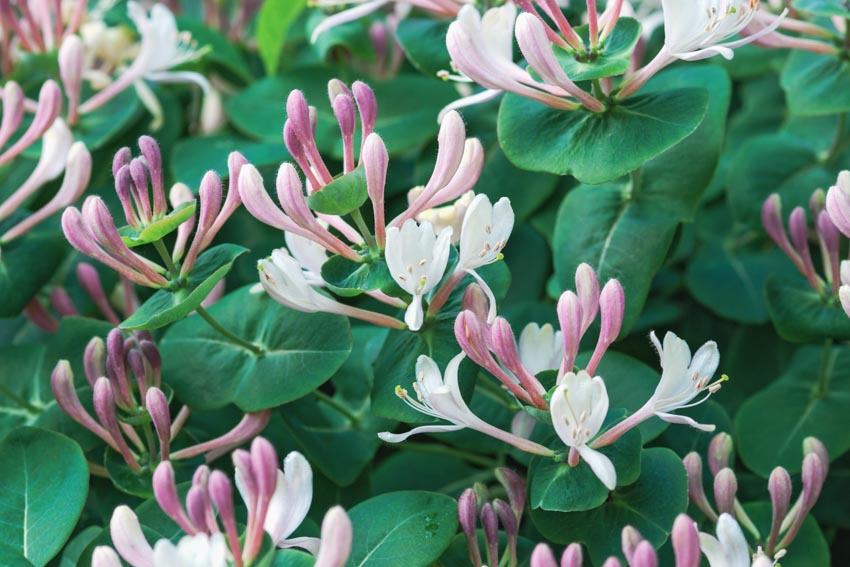
Their blooms offer a range of hues from sweet, pale yellow to blushing pink, and the shape of the blooms appears tropical and inviting. Honeysuckle rarely requires any trimming, as they prefer to cling to their supports, so any trimming will likely be just to cut away excess foliage between seasons.
Wisteria
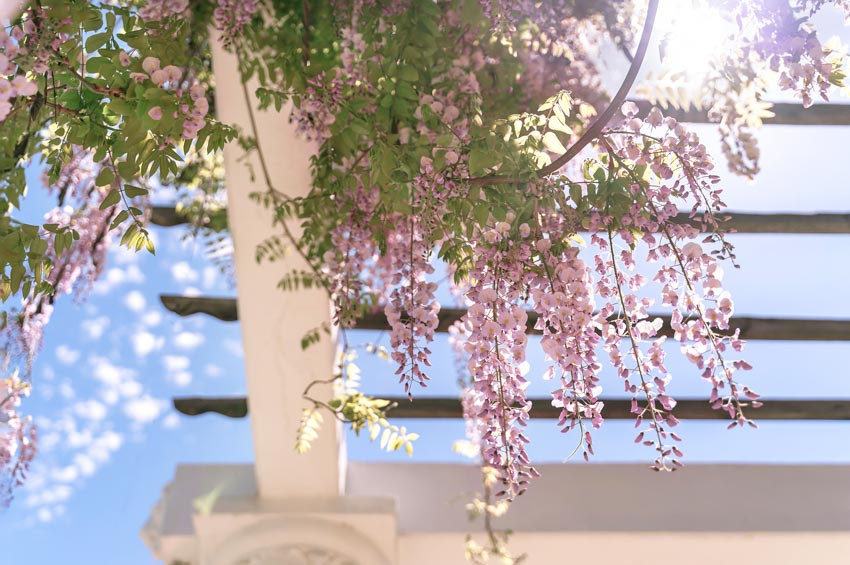
Although it can be difficult to manage, starting with a new plant is relatively easy to do if proper training is done to ensure that the vines grow in a way that compliments the shape of the pergola.
Wisteria love water, so shady areas are best for them to thrive in. Their blooming season comes a little early, so those big clusters of blooms are sure to invite the rest of the spring flowers out for the season.
Ivy

Ivy grows quickly and establishes on a pergola with little effort, so convincing it to take hold with a string or two is generally enough to get things going. Within a season or two, your pergola will be covered in these lovely emerald vines.
Ivy can be planted in most regions, as there are so many varieties that several of them are bred to be grown in especially hot or cold climates. This is a great option for anyone wanting year-round foliage with the cleanup of fallen blooms.
Nasturtiums
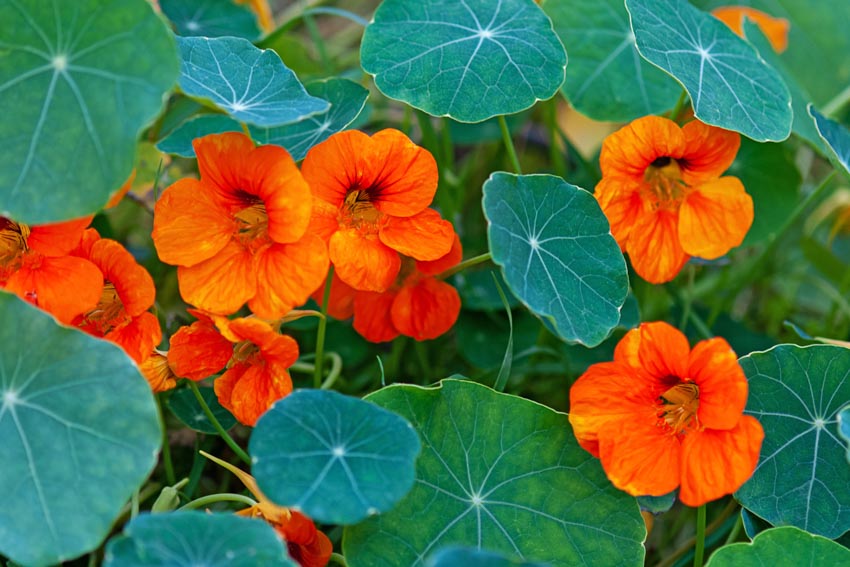
These colors look fantastic paired together with the circular, lily pad-shaped leaves that accompany them. As an added bonus, nasturtiums are edible and taste fantastic in teas, salads, and soups, with a warm and zesty flavor that adds warmth to any dish or drink.
Best Climbing Plants For A Pergola
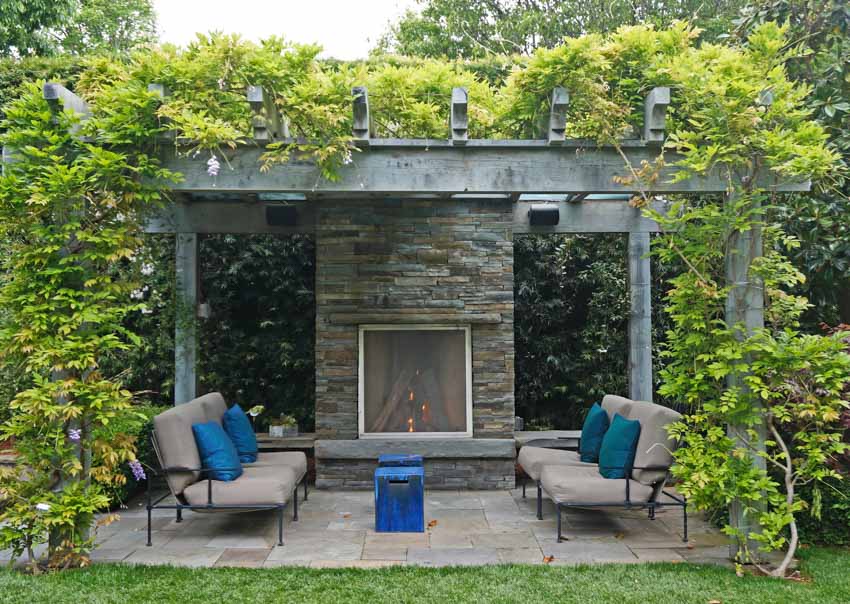
Most are generally hybridized shrubs that have been altered and trained to grow in a vining fashion using nodes or runners, rather than taking hold to support themselves as they grow.
Climbing species will likely need a little extra help to get established, so be prepared for some staking and stringing.
Here are a few great climbing plants for the project:
Climbing Hydrangea
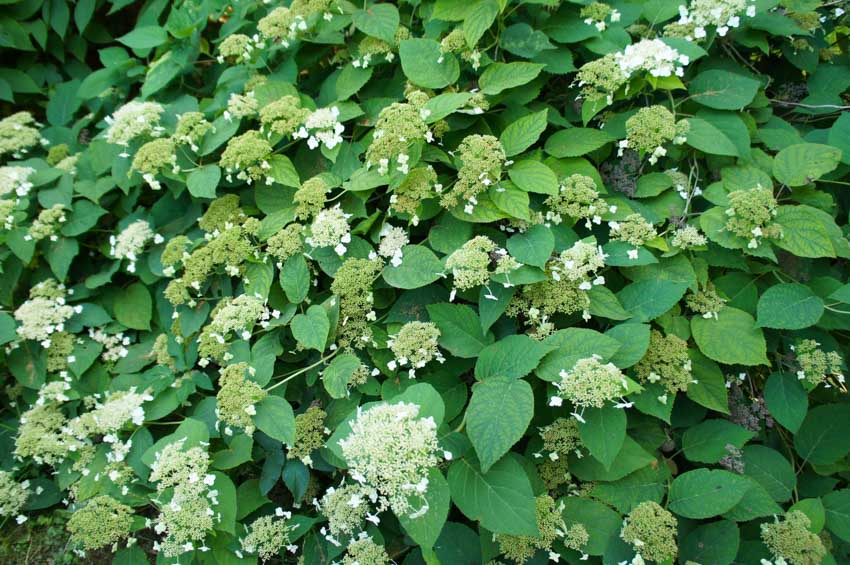
However, some varieties happen to take very well to being trained up into a pergola. This process takes much longer than traditionally preferred vines, but the payoff is well worth the wait to walk under the big, bright blooms. Some flower clusters on hydrangeas can grow to be a square foot or more!
Grape Vines
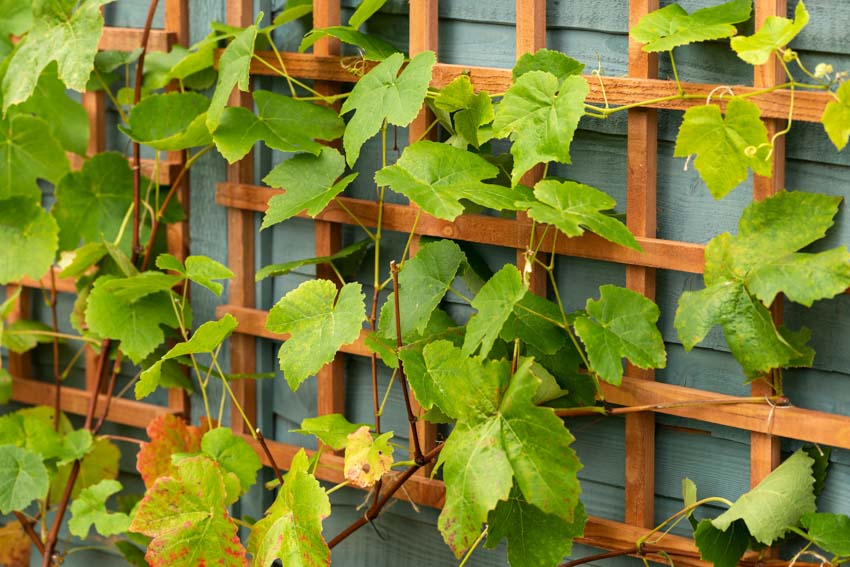
These vines are known for their climbing capabilities, growing in the wild to the very tops of trees and beyond. In a garden setting, however, they tend to grow a bit out of hand at times, so routine pruning is in order to keep the curling tendrils at bay.
If you prefer to let them wander as they please, you can always add on some fixtures to allow the vines to acquaint themselves with nearby trees.
Butterfly Pea
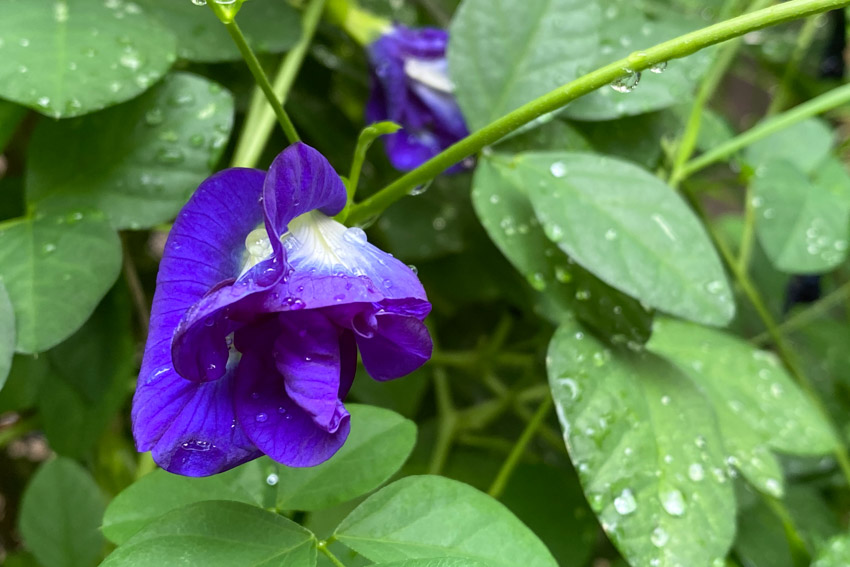
Their main attraction is their small, dusty-blue leaves, reminiscent of eucalyptus leaves, which maintain the perfect balance between the countless flowers and the surface of the pergola’s beams.
While these vines are pleasant to look at, they can grow a little out of control, so it’s best to keep an eye on the ground surrounding them to ensure that they stay in their designated space.
True Jasmine
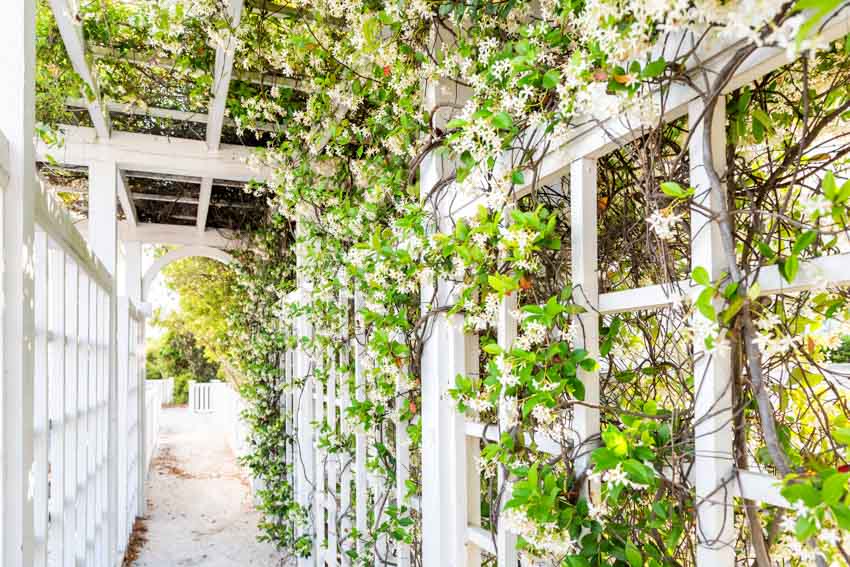
Jasmine is a very popular additive to teas, rice, and perfumes, and catches the attention of avid gardeners who are familiar with the rich, decadent smell.
When the sun shines directly on the blooms, however, the scent can become overpowering, so take care to plant them in an area that is at least partially shaded to opt for a more subtle presence.
What Is The Fastest Growing Vine For A Pergola?
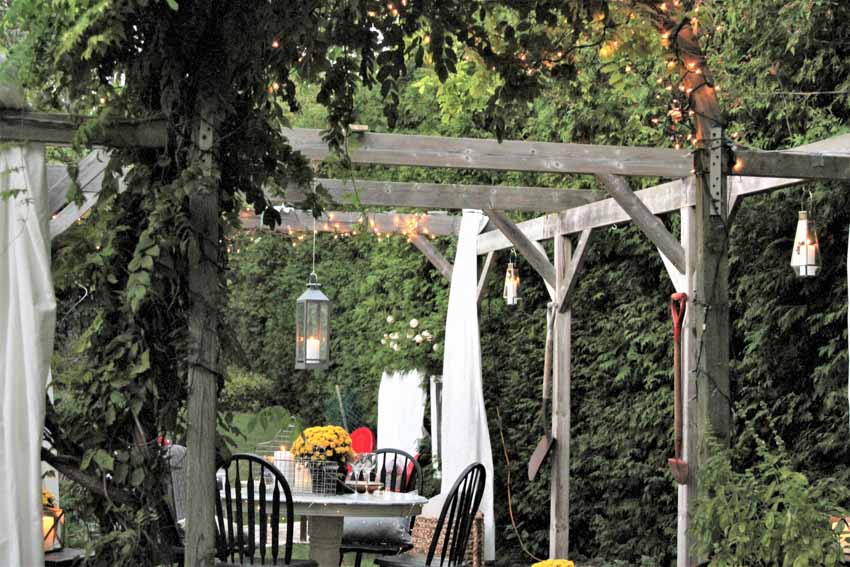
It does, however, make for an absolutely stunning display when grown on a pergola, especially if it’s kept in check. Always make sure that morning glories are allowed in your state before planting to avoid spreading an invasive species.
This plant can present in countless colors, but the most popular are the blue, red, and white varieties. Their star-shaped flowers are attractive to hummingbirds and people alike. In many instances, morning glory comes up as a volunteer from birdseed or passersby who unknowingly spread the tiny seeds on shoes, clothing, and fur.
This vine is best grown in containers that can be elevated from the ground to prevent them from spreading into neighboring flowerbeds or other unwanted areas, as they compete with other plants for resources and can choke out your beloved begonias effortlessly.
What Is The Best Clematis For A Pergola?
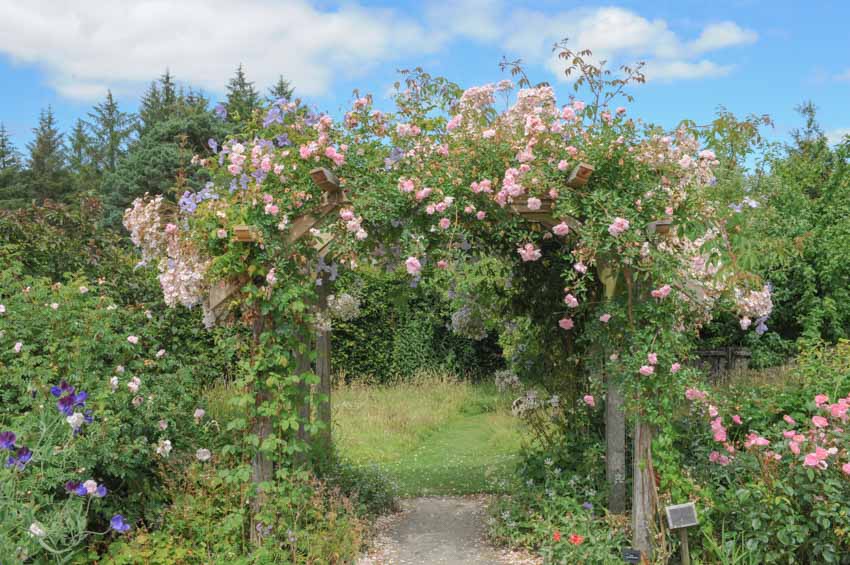
No matter what kind of climate you live in, it’s very likely that some form of this plant will grow on your pergola unless you live in a region where nothing else will possibly grow.
Despite the endless number of varieties available, gardeners have narrowed down a select few as favorites for climbing and vining purposes. They can be grown on a lattice, aggregate stone, different fence designs, mailboxes, and yes, pergolas. Here are some of the best that is suited for almost all different types of climates:
Arctic Queen
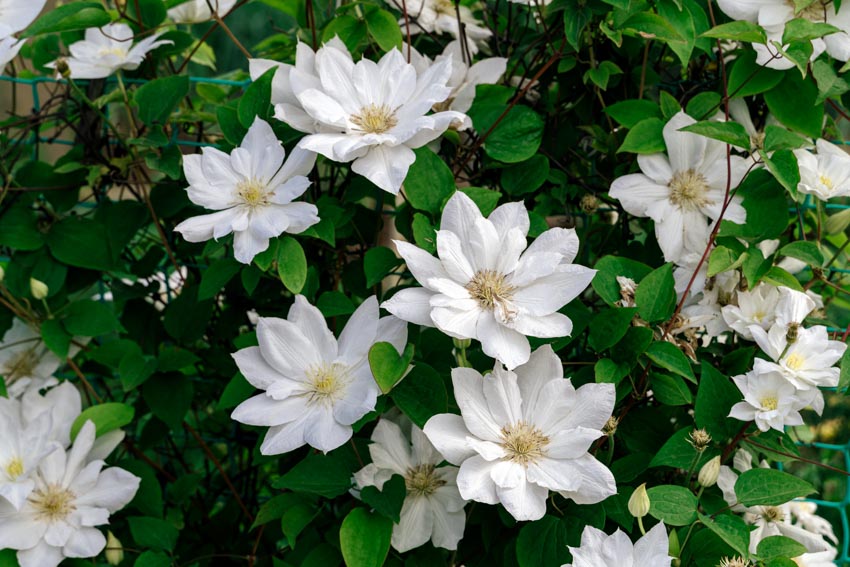
Arctic queen’s blooms are laced with frilly, delicate petals that remain for longer than many other varieties before dying off for the season.
Anemone
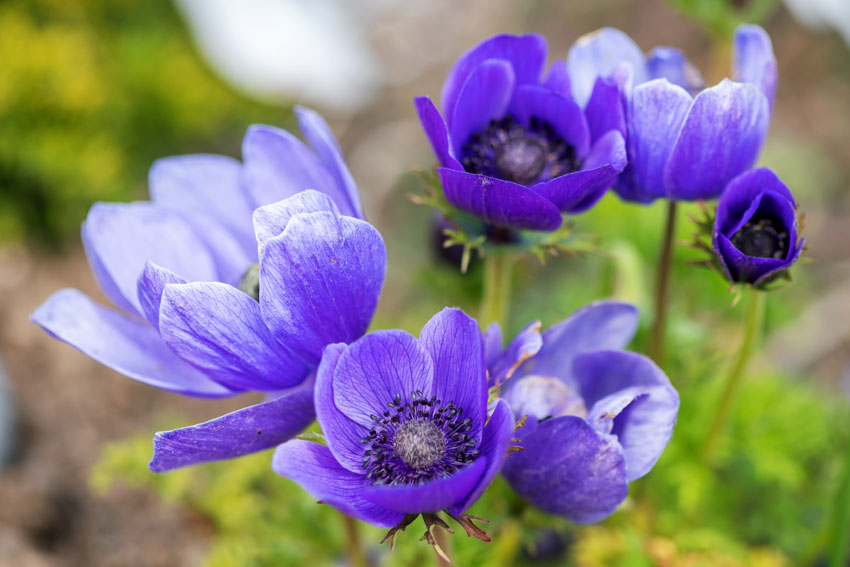
The best feature of this variety is that it rarely needs to be altered or rearranged, as the vines branch out in every direction, effectively covering any pergola or lattice they adhere to.
Purple Clematis
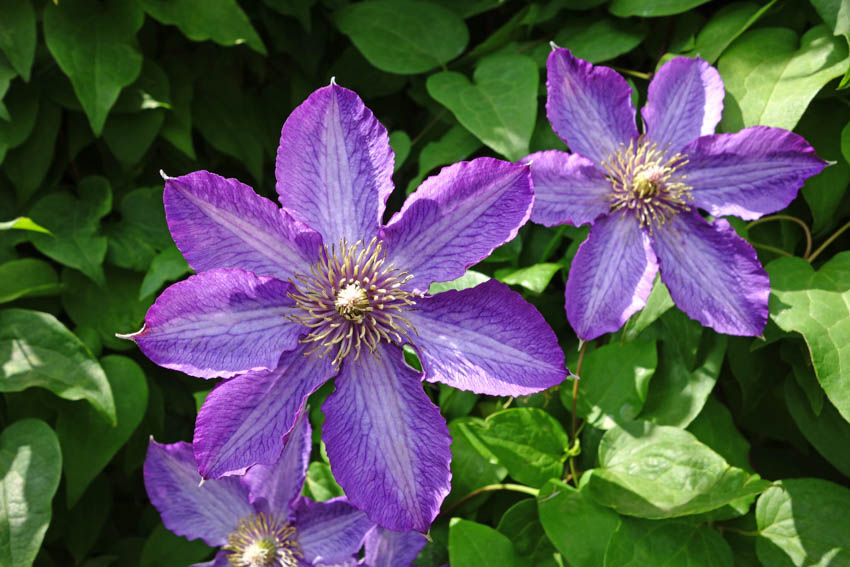
This variety can be rather aggressive, meaning that it grows so quickly that it can bypass some areas that you wish to cover, especially when there are gaps in lattice or on support beams that need some decor.
Viva Polonia
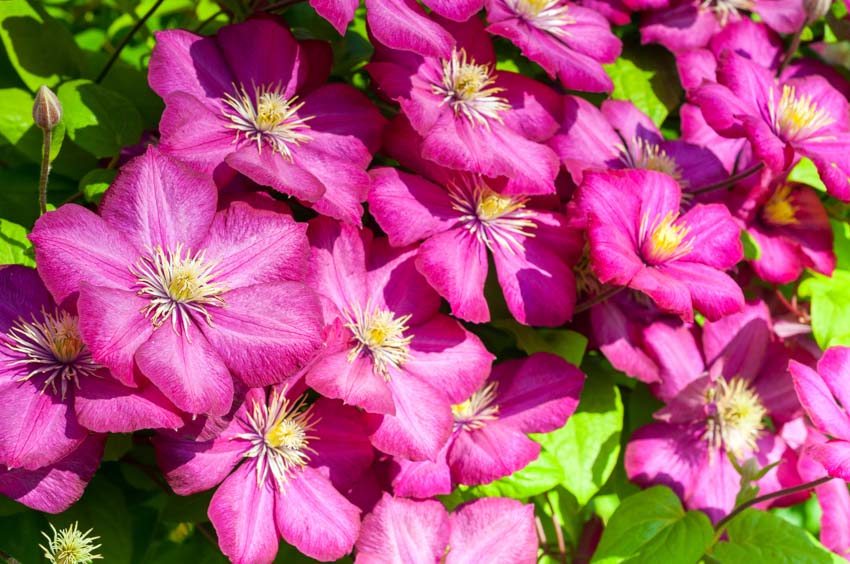
Viva Polonia likes full sun as most clematis do, but doesn’t tolerate afternoon shade well, which can stunt its growth and cause it to develop abnormal growth patterns. With plenty of water and direct sun, this species is a perfect addition to any pergola size.
How To Grow Vines On A Pergola
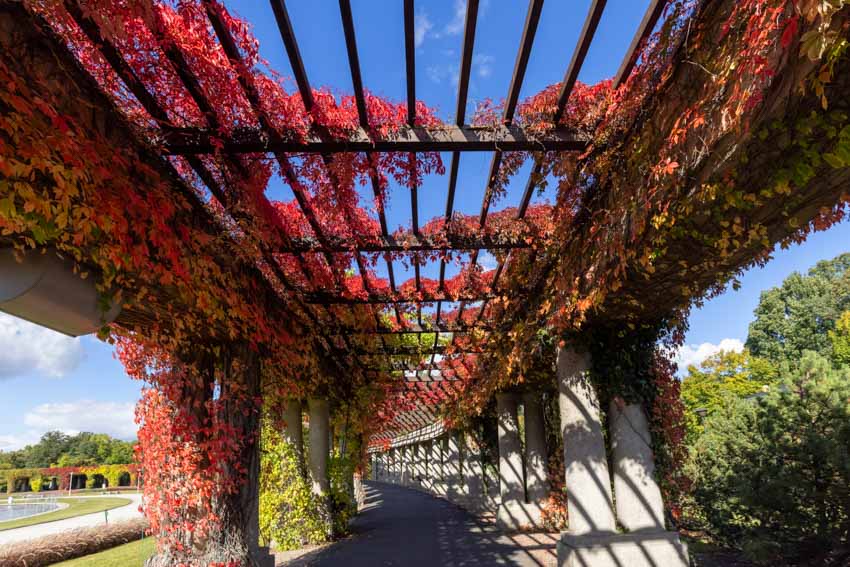
There are many different methods to start a plant growing on a pergola, but here are some of the best methods for anyone trying to establish some vines:
Ground Planting Method: Planting vines directly into the ground is great for plants that have larger root systems, such as wisteria and grapes. To do this, prepare a large area surrounding the base of the pergola where you wish the vine to start.
Work up at least 12 inches of soil, then add some nutrients or fertilizer in with the soil to prepare it for planting. This area should be kept weeded after planting to prevent the vine from retracting or dying, and should be kept constantly moist until the vines are established around three to four feet high and spreading out rapidly.
Once the plants start to gain some height, try to lead them to the pergola by shading the area just around the roots to encourage the plants to climb for sunlight. Do not block out light entirely, though!
Container Planting Method: This method is similar to ground planting, but the plants in containers need to be maintained a bit more. Repotting will eventually become a necessity, especially to maintain thick or woody vines.
Be sure to place the pots very near to the base of the pergola, and try to start training the vines up by placing them in a vertical position using stakes or twine. These can be removed once the vines have a firm grip on the post. For new plants, water twice per day thoroughly, and once per day for established plants depending on the humidity.
Hanging Basket Method: If you would rather have vines on the root of the pergola but not climbing up the sides, you can opt for a rooftop-only vine by planting one vine each in several hanging basket surrounding the perimeter of the pergola.
As hanging basket are prone to more airflow and sun spots, try to use a drip watering system or a mister system to maintain these containers. While they dry out more quickly, hanging baskets are great for vines and add whimsy to a pergola with less effort.
If you don’t plan on installing an irrigation system to maintain hanging basket, plan instead to water them two to three times per day to prevent drying in the summer, which leaves vines looking limp and ragged.
Read more about our guide on the best pergola furniture ideas here.

